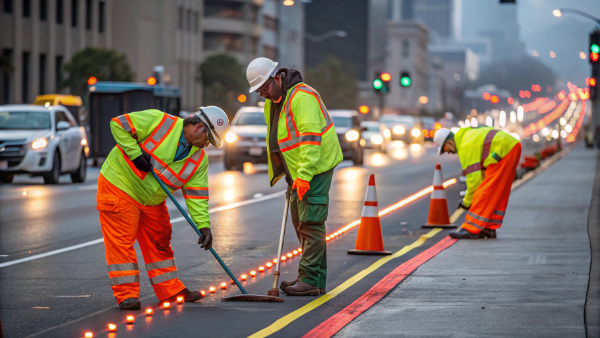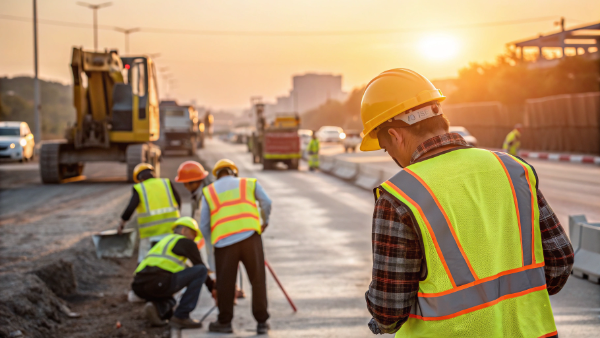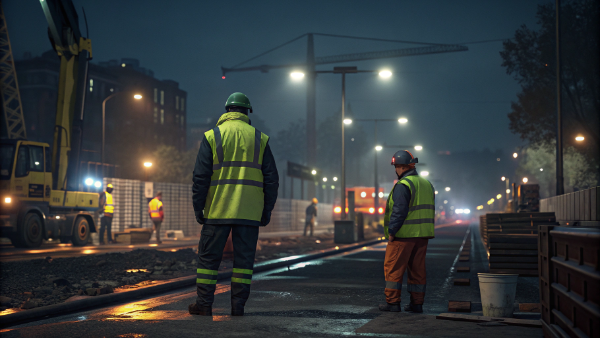Choosing the right safety vest feels confusing. You need to protect your team, but the rules are complicated. Getting it wrong could lead to fines or, worse, an accident.
Yes, a compliant single-piece Class 3 garment must have sleeves. This is because the standard requires a large amount of fluorescent and reflective material for full-body visibility. A sleeveless vest alone cannot meet these strict requirements for high-risk environments.
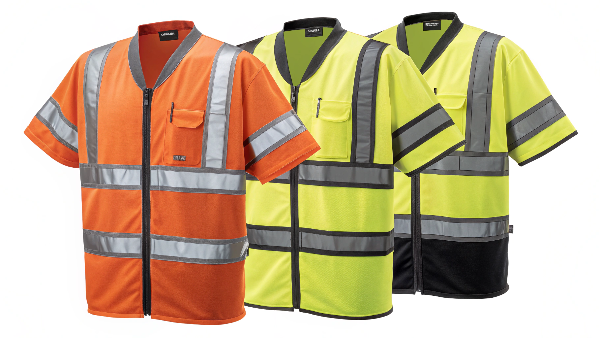
That is the short answer, but it's just the beginning. The world of high-visibility safety apparel has many rules and details that every safety manager needs to know. Understanding these details is key to keeping your workers safe and your company compliant. Let's break down everything you need to know about Class 3 garments so you can make confident choices for your team.
What are the requirements for a Class 3 safety vest?
Are you worried your gear doesn't meet the strict Class 3 rules? It's a common concern for safety managers. Let's make sure you're fully compliant and your team is protected.
Class 3 garments1 demand the most visual material. They must have at least 1,240 square inches of fluorescent background material and 310 square inches of reflective tape. This ensures workers are seen from a distance of 1,280 feet.

The ANSI/ISEA 107 standard2 sets these high requirements for a simple reason: worker safety3 in the most dangerous environments. Class 3 is designed for workers who are exposed to high-speed traffic (over 50 mph), complex backgrounds, or terrible weather conditions. The extra material isn't just a number; it creates a complete human outline that a driver can recognize instantly, day or night. At Vissafety, we design our Class 3 apparel to meet and often exceed these minimums because we know there is no room for error when a life is on the line.
Material Requirements by Class
Here is a simple table that shows the minimum material needed for each class of high-visibility clothing.
| Class | Minimum Background Material | Minimum Retroreflective Material |
|---|---|---|
| Class 1 | 217 in² | 155 in² |
| Class 2 | 775 in² | 201 in² |
| Class 3 | 1240 in² | 310 in² |
This table clearly shows why a simple vest cannot be Class 3 on its own.
Do all class 3 vests have sleeves?
Still wondering about sleeves? The term "Class 3 vest" can be very misleading. Let's clear up this common point of confusion to keep your team safe and compliant.
A single garment must have sleeves to qualify as Class 3. However, you can achieve Class 3 protection by combining a Class 2 sleeveless vest4 with Class E pants5. The key is the total visible material of the entire outfit.
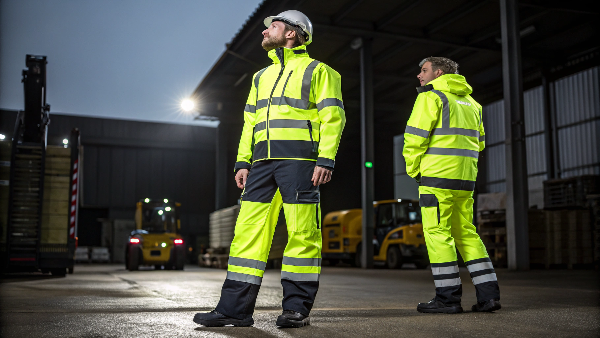
This "ensemble" approach gives you flexibility. A worker doesn't have to wear a heavy jacket on a hot day to be Class 3 compliant. This is a critical detail in the ANSI/ISEA 107 standard. By combining different pieces, workers can adapt to changing weather while staying fully protected. For example, a lightweight, breathable Class 2 vest paired with hi-vis trousers provides the necessary coverage for Class 3 protection. As a manufacturer, we often work with clients to create these custom combinations. We help them find the perfect balance of comfort, compliance, and safety for their specific job sites.
Creating a Class 3 Ensemble
| Upper Body Garment | Lower Body Garment | Resulting Class |
|---|---|---|
| Class 2 Vest | Class E Trousers | Class 3 |
| Class 2 Vest | Non-Rated Trousers | Class 2 |
| Class 3 Jacket | Any Trousers | Class 3 |
This system allows for practical, year-round safety solutions.
What is the difference between Class 2 and Class 3 safety vest?
Choosing between Class 2 and Class 3 feels complicated. Making the wrong choice puts your workers at risk. I will explain the key differences as simply as possible.
The main difference is the amount of visible material and where it is placed. Class 3 requires much more background and reflective material6, including on the sleeves, for safety in high-speed, high-risk environments. Class 2 is for lower-risk areas.
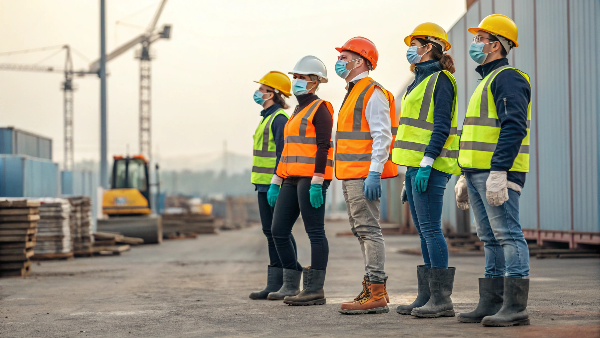
Think of it in terms of the work environment. Class 2 is for workers near traffic moving between 25 and 50 mph. This includes roadway construction workers, utility workers, and survey crews. The vest provides good visibility of the torso. Class 3 is for people working right next to traffic exceeding 50 mph, like highway maintenance crews or emergency responders. The addition of sleeves with reflective material on Class 3 garments outlines the full human form. This "biomotion7" helps drivers recognize a person much faster, especially when they are moving. The choice isn't about which is "better," but which is right for the specific hazard level of the job.
| Feature | Class 2 Safety Apparel | Class 3 Safety Apparel |
|---|---|---|
| Worker Environment | Traffic 25-50 mph, lower-risk | Traffic > 50 mph, high-risk |
| Background Material | 775 in² | 1240 in² |
| Reflective Material | 201 in² | 310 in² |
| Required Sleeves | No | Yes (or paired with Class E pants) |
What are the requirements for Class 3 clothing?
Need to outfit your team with Class 3 clothing? The rules are strict for a very good reason. Let's go over the full checklist to ensure total compliance and safety.
Class 3 clothing must cover the torso and have sleeves. It needs 1,240 sq. inches of fluorescent background material8 and 310 sq. inches of reflective tape9. The reflective tape must be placed to outline the human shape.
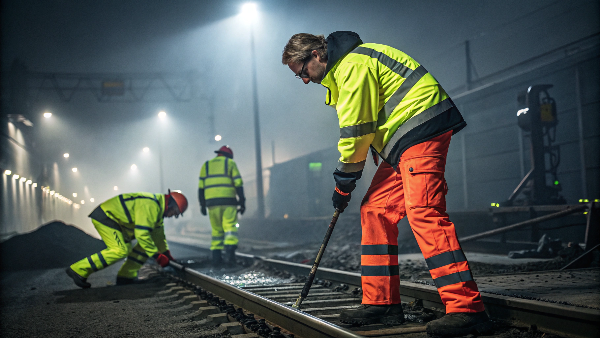
Going deeper than just the material amounts, the standard is very specific about how the garment is constructed. This ensures maximum visibility from all angles and in all conditions.
Background Material Details
The background fabric must be one of three approved fluorescent colors: yellow-green, orange-red, or red. At our factory, we use advanced dyeing processes and quality control to ensure these colors are vibrant and won't fade after washing, which is critical for long-term compliance.
Reflective Tape Placement
The standard requires reflective bands around the torso and over the shoulders. For Class 3, tape must also be on the sleeves. This creates an unmistakable human outline, helping drivers react faster than if they just saw a single floating light. The placement is just as important as the material itself.
What are the OSHA requirements10 for safety vests?
Worried about a surprise OSHA inspection? Their rules on high-visibility clothing can seem vague. I'll show you what they actually look for when they visit a job site.
OSHA does not have its own specific hi-vis standard. Instead, it refers to the ANSI/ISEA 107 standard. OSHA requires employers to perform a hazard assessment11 and provide appropriate PPE. If workers face risks from moving vehicles, ANSI-compliant gear12 is a must.
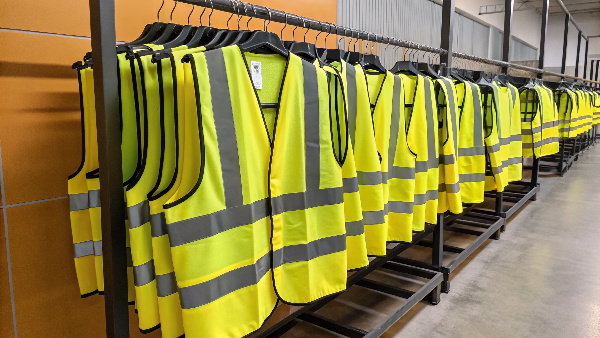
This is a key point to understand. OSHA's power comes from its General Duty Clause, which says employers must provide a workplace free from recognized hazards. For road work, that hazard is vehicle traffic. To meet this duty, OSHA expects you to use the industry consensus standard, which is ANSI/ISEA 107. An inspector will want to see your documented hazard assessment. This document should explain why you chose a specific class of vest for a specific task. For example, it should show you considered traffic speed, work duration, and sightlines before issuing Class 2 or Class 3 gear. By using certified Vissafety apparel, you already have the "appropriate PPE" part covered, which makes passing an inspection much easier.
What does a black safety vest mean?
Ever see workers in black or other non-fluorescent vests? It is not just about style. This color system can be very important for on-site safety and organization, but it has limits.
A black safety vest usually identifies a person with a specific role, like a supervisor, foreman, or site visitor. It's part of an internal color-coding system. However, these vests are often not ANSI-compliant for high-visibility purposes and shouldn't be used near traffic.
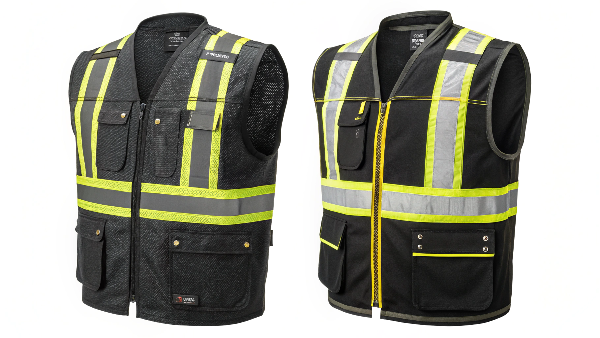
Many companies use color to quickly identify roles on a busy or complex job site. This is very efficient. For example, a new truck driver can instantly spot the foreman in the black vest for instructions. However, it's critical to remember that these vests are for identification, not for conspicuity (the ability to be seen). If that supervisor needs to walk into an area with moving vehicles, they must put on an ANSI-compliant vest over their identification vest. We often manufacture black-bottom vests, which combine a compliant fluorescent upper with a dark lower portion that hides dirt. This offers a practical blend of compliance and a professional look.
Common On-Site Color Codes
| Vest Color | Common Role | ANSI Hi-Vis Compliant? |
|---|---|---|
| Yellow/Orange | General Labor, All Workers | Yes (if meets standard) |
| Black | Supervisor, Foreman | Rarely |
| Blue | Technical Staff, Electrician | No |
| White/Gray | Site Manager, Engineer | No |
What is the difference between yellow and orange safety vests?
Yellow or orange, does it really matter? It seems like a simple choice of preference, but the color you pick can actually impact how safe your workers are in different environments.
Both fluorescent yellow-green and orange-red are fully ANSI-compliant colors. The best choice depends on the work background. Orange offers better contrast against green foliage and white snow, while yellow-green is more visible in low-light and foggy conditions.

The science behind this is about contrast. The goal is to make the worker stand out as much as possible from their surroundings.
When to Choose Orange-Red
If your team works in rural areas with lots of trees, grass, and dirt, orange is an excellent choice. It creates a very strong visual clash with the green and brown background. It also stands out very well against a bright, snowy landscape. We supply many orange garments to clients in regions with heavy snowfall for this reason.
When to Choose Yellow-Green
This color is the brightest in the visible spectrum and what the human eye detects most easily. It's perfect for urban settings with complex backgrounds full of gray concrete, black asphalt, and other vehicles. It performs exceptionally well at dawn and dusk, cutting through the low light to keep workers visible.
What factors determine the clothes we wear class 3?
Choosing the right Class 3 gear is about more than just buying a jacket. Weather, job tasks, and specific regulations all play a role. Here is how to think through your selection process.
The main factors are the work environment (vehicle speeds over 50 mph), weather conditions (hot vs. cold), and the specific job tasks. The goal is always to achieve full-body visibility and worker comfort without any compromise on safety rules.

A proper hazard assessment is the first and most important step. It's a simple process of asking the right questions to determine the exact level of risk your workers face.
Environmental Assessment Checklist
- Traffic Speed: Is it consistently over 50 mph?
- Proximity: How close will workers be to the traffic?
- Sight Distance: Are there hills, curves, or obstructions that limit a driver's view?
- Background: Is the worksite urban, rural, complex, or simple?
- Light Conditions: Will work happen at night, dawn, dusk, or in bad weather?
Task and Weather Needs
Once you know the risk level, consider the worker. In hot climates like California, a heavy jacket is not practical. We worked with our long-term client Danny Cheng to develop lightweight, breathable shirts with cooling fabrics that still meet Class 3 standards. This ensures workers stay comfortable and don't take off their PPE to cool down.
What are the ANSI standards for class 3?
You hear the term "ANSI/ISEA 107" all the time. But what does that standard actually mean for the Class 3 gear you buy? Let's decode the standard and its purpose.
The ANSI/ISEA 107 standard for Class 3 requires 1,240 sq. inches of fluorescent background material and 310 sq. inches of retroreflective material. Crucially, the garment must have material on the sleeves and shoulders to provide a full human outline.
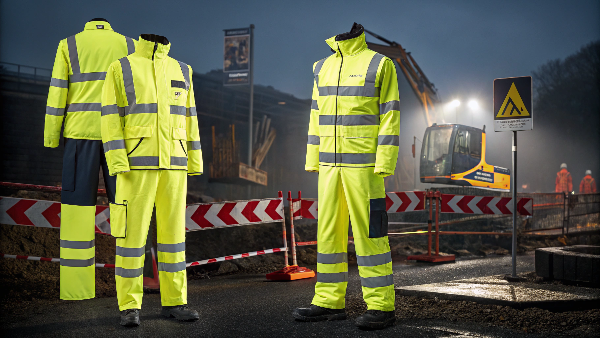
This standard is the North American rulebook for high-visibility clothing. It was created by the American National Standards Institute and the International Safety Equipment Association to ensure all hi-vis gear performs reliably. It takes the guesswork out of safety. When you buy a garment that is certified to this standard, you know it has been tested for color, brightness, and durability. As a manufacturer, we send our products to third-party labs to get this certification. It's a promise to our clients that the gear they buy will perform as expected when it matters most.
Key ANSI 107 Specs for Class 3
| Component | Class 3 Requirement | Why It Matters |
|---|---|---|
| Background Material | 1240 in² | Maximum daytime and low-light visibility. |
| Reflective Material | 310 in² | Brightness in nighttime conditions when hit by headlights. |
| Reflective Tape Width | Min. 2 inches (50mm) | Provides a strong, clear outline from a distance. |
| Garment Design | Must have sleeves | Ensures "biomotion" recognition of the human form. |
Conclusion
Choosing the right Class 3 gear means understanding sleeve rules and ANSI standards. A proper hazard assessment ensures your team has maximum protection and is fully compliant on any job site.
-
Understanding Class 3 garment requirements is crucial for ensuring worker safety in high-risk environments. ↩
-
Explore the ANSI/ISEA 107 standard to ensure your safety gear meets industry regulations and protects your team. ↩
-
Explore strategies to enhance worker safety and compliance with industry standards. ↩
-
Find out if a sleeveless vest can meet Class 3 compliance and what alternatives exist for safety. ↩
-
Discover the role of Class E pants in achieving Class 3 compliance for safety gear. ↩
-
Learn about reflective material and its role in ensuring visibility and safety for workers. ↩
-
Learn how biomotion enhances visibility and safety for workers in high-risk areas. ↩
-
Learn about fluorescent background material to enhance visibility and compliance in safety apparel. ↩
-
Discover the importance of reflective tape in safety vests for maximizing visibility in low-light conditions. ↩
-
Understanding OSHA requirements is essential for compliance and avoiding penalties on job sites. ↩
-
Understanding hazard assessments is key to selecting the right safety gear for your work environment. ↩
-
Explore the importance of ANSI-compliant gear in maintaining safety standards on job sites. ↩

